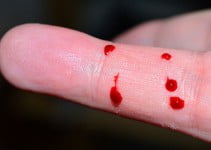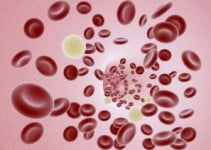Premenstrual Dysphoric Disorder (PMDD), a severe type of premenstrual syndrome, is known to cause extreme mood shifts that can disrupt a woman’s life.
If you have this condition, the symptoms can interfere with your relationships, social activities, and work.
What Causes Premenstrual Dysphoric Disorder
While the exact cause is not known, most researchers believe that it’s triggered by hormonal changes that are linked to the menstrual cycle. Recent studies also show that PMDD is connected to low serotonin levels.
This is a chemical inside the brain that assists with the transmission of nerve signals. Some of the brain cells that use this chemical as an envoy are involved in the controlling of our mood, sleep, pain, and attention. As a result, any chronic change in the serotonin levels could trigger PMDD symptoms.
Premenstrual Dysphoric Disorder Symptoms
These symptoms usually start seven to ten days prior to the start of your monthly period and will go on for the first few days. They include:
- Physical issues, such as breast tenderness, muscle or joint pain, swelling, bloating, or headaches;
- Depression or feelings of hopelessness;
- Mood swings;
- Noticeable anger, or heightened social conflicts;
- Irritability
- Anxiety and tension;
- Diminished interest in regular activities;
- Fatigue or tiredness;
- Difficulty concentrating;
- Change in a desire for food;
- Sleep problems;
- Overwhelmed or out of control feeling
Premenstrual Dysphoric Disorder Diagnosis
A doctor will assess symptoms as well as medical history and then do a thorough medical examination to give a diagnosis. This might also include a psychiatric evaluation.
Prior to making a PMDD diagnosis, the doctor will also check to see if the symptoms are caused by any emotional problems, such as panic disorder or depression.
In addition to that, a check would be done to rule out any underlying gynecological or medical conditions, such as fibroids, endometriosis, hormonal problems, and menopause.
A PMDD diagnosis will be made if at least five of the symptoms listed above occur most of the time throughout the seven days leading up to menstruation and then go away in a few days after it starts.
Premenstrual Dysphoric Disorder Treatments
PMDD treatments are meant to prevent or minimize the symptoms. They may include the following:
Medications: PMDD can be treated by several FDA approved antidepressants. You can take these medicines intermittently or continuously, during only day fourteen of the premenstrual period. The side effects of such drugs might decrease when they are used intermittently.
In addition to the above, some OTC pain relievers might help to relieve symptoms such as backache, cramping, breast tenderness, and headache. These include aspirin, Aleve (naproxen), and Motrin (ibuprofen). Water pills or diuretics can aid with bloating and fluid retention.
If you have anxiety and your condition is not improved by the approved medications, then an anti-anxiety drug might be recommended.
Good nutrition: Most health experts suggest a reduced intake of caffeine, salt, alcohol, and refined sugar.
Aside from doing that, you can take nutritional supplements to help reduce the symptoms of PMDD. A daily dose of 1,200 milligrams of supplemental and dietary calcium is recommended.
Other supplements such as Vitamin E, magnesium, Vitamin B6, and L-tryptophan might be recommended, but the effectiveness of these is not well established. Ensure that you talk to your doctor before using any supplements.
Birth control pills: These pills help to stop ovulation and stabilize hormonal changes, thus reducing the symptoms of PMDD for some women.
Herbal remedies: Additional research is needed, but some studies show that chasteberry might help to reduce the anger, irritability, headaches, and mood swings that are linked to PMDD.
Herbal supplements are not regulated by the Food and Drug Administration, so you need to consult a doctor before using them.
Hormones: Some women benefit from using hormones as PMDD treatment. In addition to birth control pills and medications, the use of estrogen or progesterone is the second hormonal approach that is taken to relieve the symptoms of PMDD. However, it is not clear if this approach is very effective.
Lifestyle and diet changes: Irritability and anxiety symptoms can be reduced if caffeine intake is reduced. Carbohydrates eaten in smaller, more frequent meals might help to decrease the severity of your mood symptoms.
In addition, you should try to stay away from emotional triggers if possible. This includes arguments over relationship problems or financial issues.
Counseling: Some women get help when therapy is used for them to develop effective strategies to cope with PMDD. Meditation, yoga, reflexology, and relaxation therapy might help as well, but those approaches are not widely studied.
Exercise: Premenstrual symptoms are relieved with regular aerobic exercises such as swimming or walking. There is no clear evidence to say whether it is very effective as a PMDD treatment, but it’s recommended generally for the added benefits.
Talk to your doctor for him/her to review your symptoms and do a thorough medical examination to determine whether or not they are caused by PMDD. If you are diagnosed with the condition, your doctor can suggest specific treatments that can help to lessen your symptoms.



